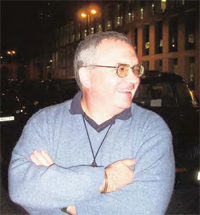|
In May 2006, Call Sign
published an astonishing article that had been passed onto us by
Dial-a-Cab driver David Marks (R22). Originating
from Motor Cycle News, we saw straightaway the benefit
that drivers who had been caught speeding might gain from it.
Whilst never wishing to encourage drivers to break the speed
limits, we all know that some limits – especially late at night
- are ridiculous and how easy it is to creep up to 45mph in a
40mph zone or pass the yellow Gatso in East Smithfield that goes
off at 34mph. Those "crimes" would have earned you three points
on your licence and could go towards costing you your licence
and with it, your livelihood.
The article printed a letter that if sent to the police following a
Notification of Intended Prosecution, often meant that
the case would be dropped and instead of three points on your
licence, you would be obliged to attend a one-day refresher
course, but there would be no points going onto your licence.
The letter was based on a legal technicality that claimed when
someone was questioned regarding any offence – beit in person or
via a form – they should first have received a formal caution
and a camera cannot give any caution. Even if the police were to
visit an offender’s home, it would then be too late as only
statements given after that time would be eligible in court and
a caution would allow the accused to remain silent.
The letter, designed by road traffic lawyer Robert Dobson,
|
Speeding loophole shut? |

David Marks originally passed the letter
onto Call Sign - now it no longer seems to work...
complied with the Road
Traffic Act (section 172) by identifying the driver. It was
known as the PACE Witness Statement. But because
no caution was given, even though the receiver of the NIP was
admitting being the driver, that statement could not then be
used against them. The result was that police forces throughout
the UK were suddenly dropping NIPs and replacing them with the
one-day refresher courses.
Included in that number were a number of DaC drivers. However, in
the intervening years it does seem that many police forces have
closed the technicality and several drivers who had since
contacted Call Sign to get a copy of the letter,
have told us that it had no longer worked.
One DaC driver, who doesn’t want to be identified, sent Call
Sign the rejection letter he received from the Camera
Enforcement Section at Essex Police. We have published it below.
Funke v France 1993 and Mawdesley v The Chief
Constable of Cheshire 2004 were two precedents mentioned in
the original letter.
Whilst we are more than happy to |
pass on the original letter to any
driver, it does look as though this speeding loophole is well
and truly shut…
Dear Mr ********
I refer to your reply to an alleged camera enforcement offence.
In reply I would advise that under Section 12 of the Road
Traffic Offenders Act 1988, any response by a driver to a
notice is admissible in any subsequent court proceedings. This
is true of any signed response, whether it be a Section 9
statement, letter or the form provided.
The judgement in Funke v France 1993 was finally dealt with
by the Privy Council and it
was decided that there was no breach of the right to a fair
trial. Section 172 provided for the putting of a single, simple
question, the answer to which could not itself incriminate the
suspect since it is not by itself an offence to drive a car.
The case of Mawdesley v The Chief Constable of Cheshire 2004
is also quite clear that the form is admissible as a confession
and that C.10.1 of the Code does not impose an obligation to
caution in such circumstances.
Consequently I enclose a conditional offer of a Fixed Penalty Fine,
which if not settled within 28 days will automatically default
to a court summons at which time you may test the evidence
before Magistrates.
For further information please visit
HERE
Yours sincerely
Kevin Brown
Safer Roads Bureau Manager
ESSEX POLICE |
